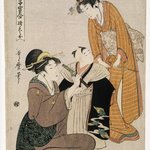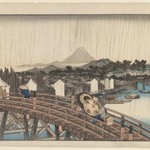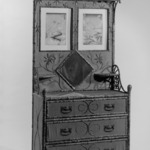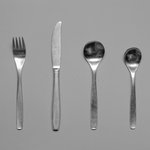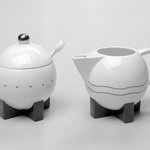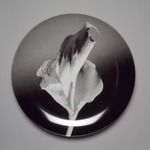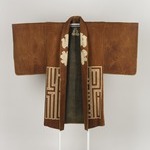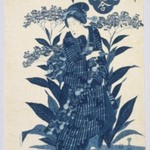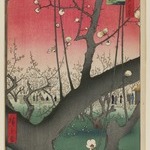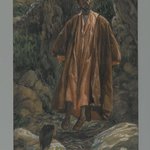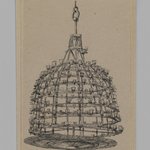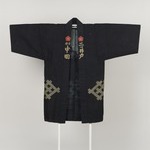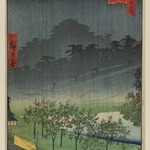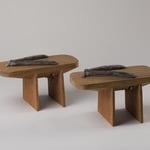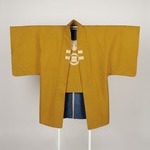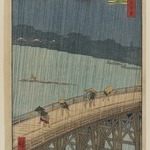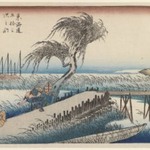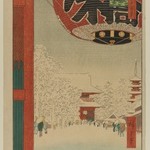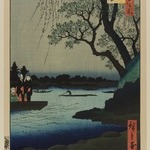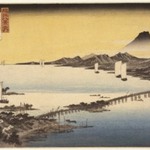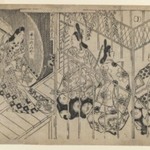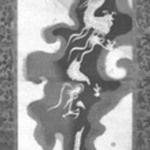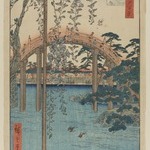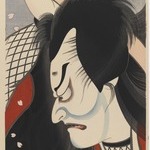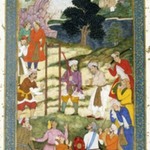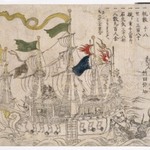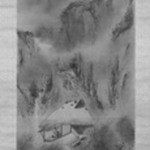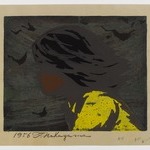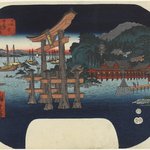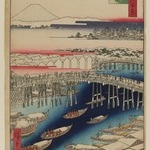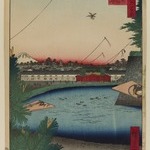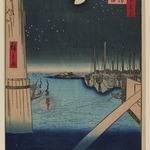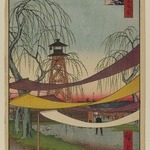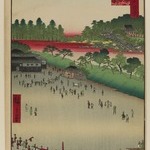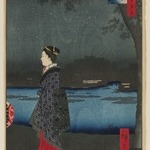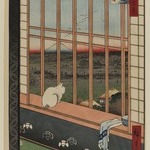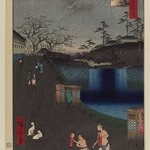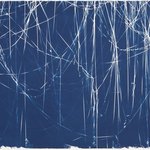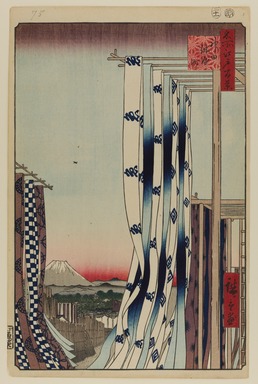
Dyers' Quarter, Kanda, No. 75 from One Hundred Famous Views of Edo
Utagawa Hiroshige
Asian Art
Long strips of freshly dyed cotton fabric hang from drying platforms erected high above dyers' shops in the Kanda district. Monogrammed fabric strips in the center dominate the composition. One bears the "fish" mark of the publisher of the series, Uoei, cleverly written so that it resembles the word for "we," pronounced "ue" and hence an abbreviation of "Uoei." The strips in the background bear the lozenge-shaped mark of Hiroshige; the inner shape reads "hi," the outer square "ro": "Hiro" [shige]. It is characteristic that the artist has placed himself behind his publisher—and that his personal mark appears only this once in the entire series.
MEDIUM
Woodblock print
DATES
11th month of 1857
PERIOD
Edo Period, Ansei Era
DIMENSIONS
Sheet: 14 3/16 x 9 1/4 in. (36 x 23.5 cm)
Image: 13 3/8 x 8 3/4 in. (34 x 22.2 cm) (show scale)



MARKINGS
Publisher: Shitaya Uo Ei
SIGNATURE
Hiroshige-ga
COLLECTIONS
Asian Art
ACCESSION NUMBER
30.1478.75
CREDIT LINE
Gift of Anna Ferris
PROVENANCE
Prior to 1930, provenance not yet documented; by 1930, acquired by Anna Ferris of Summit, NJ; 1930, gift of Anna Ferris to the Brooklyn Museum.
Provenance FAQ
CATALOGUE DESCRIPTION
This autumn scene shows long strips of freshly dyed cotton fabric hanging from drying platforms above the dyers' shops in the Kanda district, with Mount Fuji in the distance. It is thought that this design might have been inspired by a similar print, "Fuji of the Dyers' Quarter" in Hokusai's "One Hundred Views of Mount Fuji" (Fugaku Hyakkei, vol. II), published more than two decades earlier. In the left corner are textiles with large patterns in brown and indigo, for the summer or the bath. The blue and white pattern in the center is not printed in the traditional indigo of the dyer but the imported Prussian blue of the printer. The fabric will be made into cotton strips to be used as towels and headbands, common gift items in the Edo period and even today. The strips in the foreground bear the "fish" mark of the publisher, Uoei, and the strips in the background bear the lozenge-shaped mark of Hiroshige himself. The title name, Kanda Kon'ya-cho, was a proper administrative name and a description of the principal trade conducted in this district. By the end of the Edo period, the dyeing profession was scattered all over the city and by 1854 only 47 of the 522 dyeing shops in the city were located in Kanda. However, dyeing flourished here into the early 1960's, and even today there are still some fabric firms in the area, which is located just east of the Japan National Railways Kanda Station.
EXHIBITIONS
MUSEUM LOCATION
This item is not on view
CAPTION
Utagawa Hiroshige (Japanese, 1797–1858). Dyers' Quarter, Kanda, No. 75 from One Hundred Famous Views of Edo, 11th month of 1857. Woodblock print, Sheet: 14 3/16 x 9 1/4 in. (36 x 23.5 cm). Brooklyn Museum, Gift of Anna Ferris, 30.1478.75 (Photo: Brooklyn Museum, 30.1478.75_PS20.jpg)
IMAGE
overall, 30.1478.75_PS20.jpg. Brooklyn Museum photograph, 2023
"CUR" at the beginning of an image file name means that the image was created by a curatorial staff member. These study images may be digital point-and-shoot photographs, when we don\'t yet have high-quality studio photography, or they may be scans of older negatives, slides, or photographic prints, providing historical documentation of the object.
RIGHTS STATEMENT
No known copyright restrictions
This work may be in the public domain in the United States. Works created by United States and non-United States nationals published prior to 1923 are in the public domain, subject to the terms of any applicable treaty or agreement.
You may download and use Brooklyn Museum images of this work. Please include caption information from this page and credit the Brooklyn Museum. If you need a high resolution file, please fill out our online application form (charges apply).
The Museum does not warrant that the use of this work will not infringe on the rights of third parties, such as artists or artists' heirs holding the rights to the work. It is your responsibility to determine and satisfy copyright or other use restrictions before copying, transmitting, or making other use of protected items beyond that allowed by "fair use," as such term is understood under the United States Copyright Act.
The Brooklyn Museum makes no representations or warranties with respect to the application or terms of any international agreement governing copyright protection in the United States for works created by foreign nationals.
For further information about copyright, we recommend resources at the United States Library of Congress, Cornell University, Copyright and Cultural Institutions: Guidelines for U.S. Libraries, Archives, and Museums, and Copyright Watch.
For more information about the Museum's rights project, including how rights types are assigned, please see our blog posts on copyright.
If you have any information regarding this work and rights to it, please contact copyright@brooklynmuseum.org.
RECORD COMPLETENESS
Not every record you will find here is complete. More information is available for some works than for others, and some entries have been updated more recently. Records are frequently reviewed and revised, and we welcome any additional information you might have.
